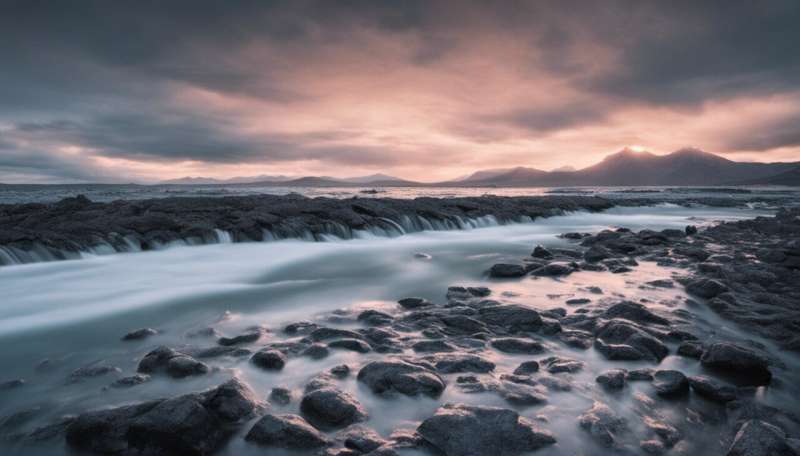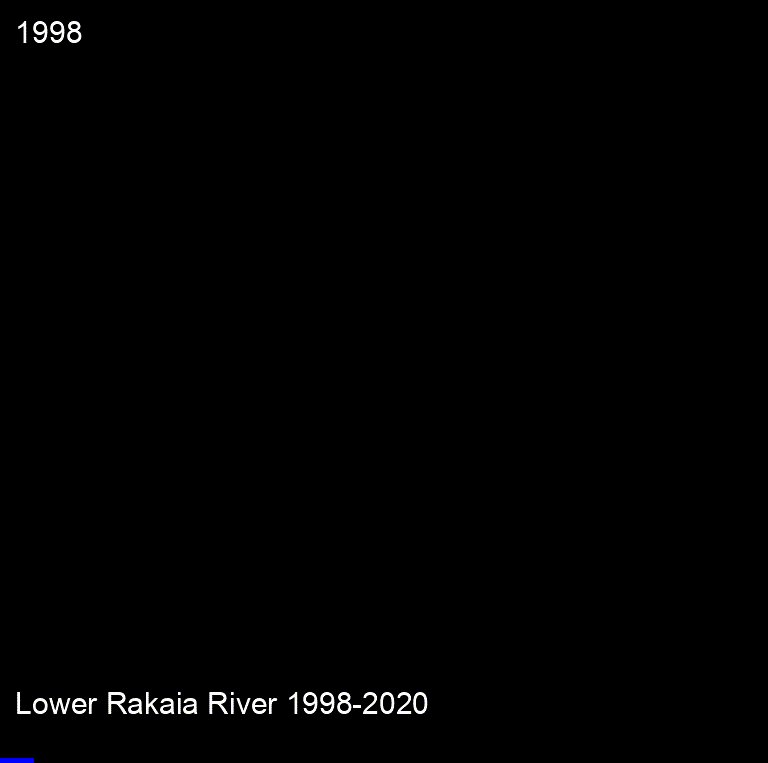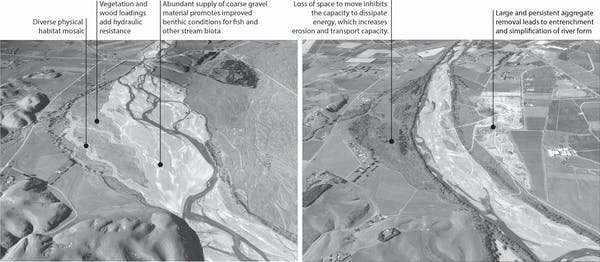Why we should release New Zealand's strangled rivers to lessen the impact of future floods

When two West Coast rivers flooded on the same day in 2019, the Waiho tore down a bridge and for 18 days, and the Fox , exposing 135 tons of rubbish that contaminated beaches more than 100km away.
A flood on the Rangitata River during the same year along the east coast of the South Island and cut a 25km path to the sea through prime dairy country.
We shouldn't be surprised when our rivers break their banks—that's just a river being a river. Current management practices in Aotearoa treat rivers as static, in the hope of making them more predictable.
But this can lead to disasters.
The recently announced of the Resource Management Act () is an opportunity to , but it isn't enough. We need to change the way we think about rivers.
By forcing rivers into confined channels, we are strangling the life out of them and creating "".
Unless we change management practices to work with a river, giving it space to move and allowing channels to adjust, we will continue to put people and rivers on a .
When flood risk is managed poorly, disadvantaged groups of the population are often . Given climate change predictions of more extreme floods and drought, the problem will only get worse.

Working with a river, not against it
A healthy river is resilient, constantly adjusting its path and regenerating habitats, with significant and recover from disturbance.
Although New Zealanders associate with the of living rivers, such as ancestral connections and places of food gathering (mahingai kai), our management practices continue to treat rivers as unchanging. This reflects a that tries to confine rivers within defined corridors to maximize the availability of land and manage flood risk.
River confinement in New Zealand is the result of both engineering works such as stop banks, intentionally focused on flood defense, and the slow creep of agricultural encroachment. Current river management practices are funded by targeted rates paid by landowners. Their goal is to protect as much land as possible as cheaply as possible.
This has arguably been very effective to date and is understandable, but ignores other river values. It also misses the point that when design limits are exceeded, disaster usually follows.
Effective river management
There are always . For example, planting introduced willows along river banks is a cost-effective way of trying to control the river in the short term. But willows spread aggressively and choke the river, diminishing habitat diversity and reducing the river's capacity to transport flood waters and gravel. This exacerbates risk in the medium to long term.

In scientific terms, effective approaches to river management look after the geomorphology of river systems—the interactions that shape the changing mosaic of river habitats—alongside concerns for water quality and aquatic ecology. This requires analysis of flows and sediment deposition to assess how a river uses its energy.
When a river has space to move, it dissipates its energy. This builds its capacity to recover from disturbances and maintain a . Constraining a river's flow into a restricted space concentrates flow energy, increases flood magnitude and accentuates problems downstream.
Rather than forcing a river into a defined place (which also often limits people's access to it), more responsive and low-impact practices would embrace a with .
Reframing environmental law
Just as landowners often perceive wetlands as potential farm land once drained, planted river margins are sometimes considered "wasted" land. removed more than 11,000 hectares of braided river bed on the Canterbury Plains between 1990 and 2012.
The current wording of the Resource Management Act () allows this, as its definition of river bed assumes a static river channel. This is clearly inappropriate for braided rivers, which have multiple shifting channels.
That said, we are cautiously optimistic about reframing the RMA to promote more judicious choices of land for development.

Reducing the impacts of future disaster
show that allowing a river to self-adjust is cheaper and more effective than active interventions that force a river into a particular place.
and have a long history of confining rivers. Once management practices start on this path, they become locked into progressively building more and more expensive hard engineering structures. Many rivers in Aotearoa New Zealand are less modified than those in other parts of the world. Changing management practices now can have a significant positive effect.
Contemporary scientifically-informed approaches to river management directly align with te ao Māori, wherein practices respect ancestral connections, living with rivers . This presents an opportunity for regenerative relations to living rivers, recognizing and so they can function unimpeded.
Although rivers in Aotearoa are well described and we have some of the best databases and monitoring practices, this does not mean we are giving effect to the principle of , which aims to respect the natural need of a river to adjust as a living entity.
Working with the processes that create and rework a river channel and its floodplain will reduce the impacts of future disasters. Recognizing the links between sections of a river and the whole catchment will help us assess how likely it is that the river will adjust to accommodate larger and more frequent future floods.
An honest discussion now could save us the direct and indirect costs of future clean-up and repair. seeks to respect the rights of healthy, living rivers that erode and flood in the right place and at the right rate.
Provided by The Conversation
This article is republished from under a Creative Commons license. Read the .![]()




















